1st Lt. Don Leigh
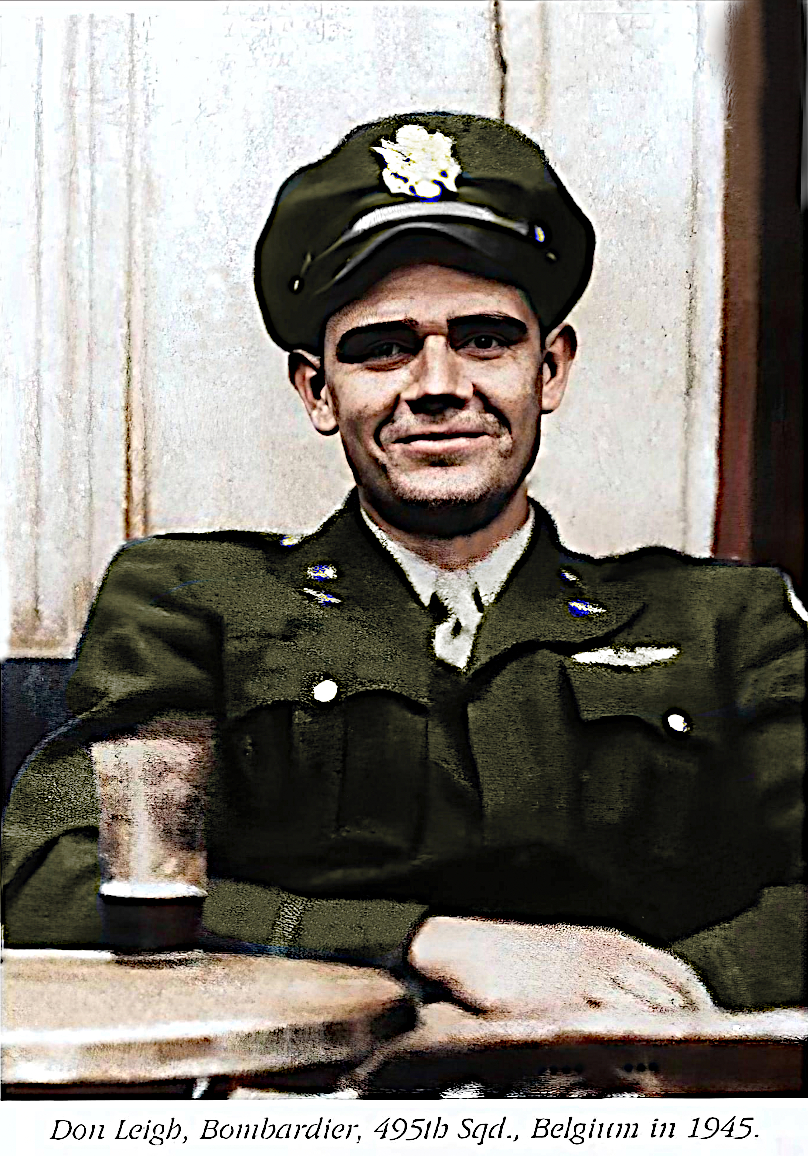
… the constant g-r-r-r-n-m-p o f close explosions was accompanied by a continuing hail-on-the-metal-roof sound of smaller fragments hitting the fuselage.
Valentine’s Day 1945, No love at Koblenz
The crew of Y5-V (Rum Buggy II), 495th Squadron, knew what was coming on that late winter morning in Belgium.
Flak map overlays distributed at briefing showed that on the assigned bomb run, twelve miles along the Rhine River, the 344th Bomb Group would face intense antiaircraft fire. Intelligence reported one hundred twelve 88 millimeter guns along the route and thirty five more at the target, the 1,237 foot Crown Price Wilhelm bridge at Engers, Germany, just outside the city of Koblenz.
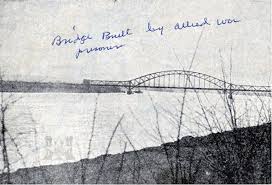
Captain J.W. Cotton, Pilot, and 1st Lt. Don Leigh, Bombardier, leading the high flight, discussed the ‘prospects’ and decided that since flying the usual evasive action to confuse German gunners would be pointless in what was sure to be a solid barrage, to fly a straight-in bomb run taking maximum time for sighting. This tactic would provide greatest bombing accuracy and the quickest possible route through flak.
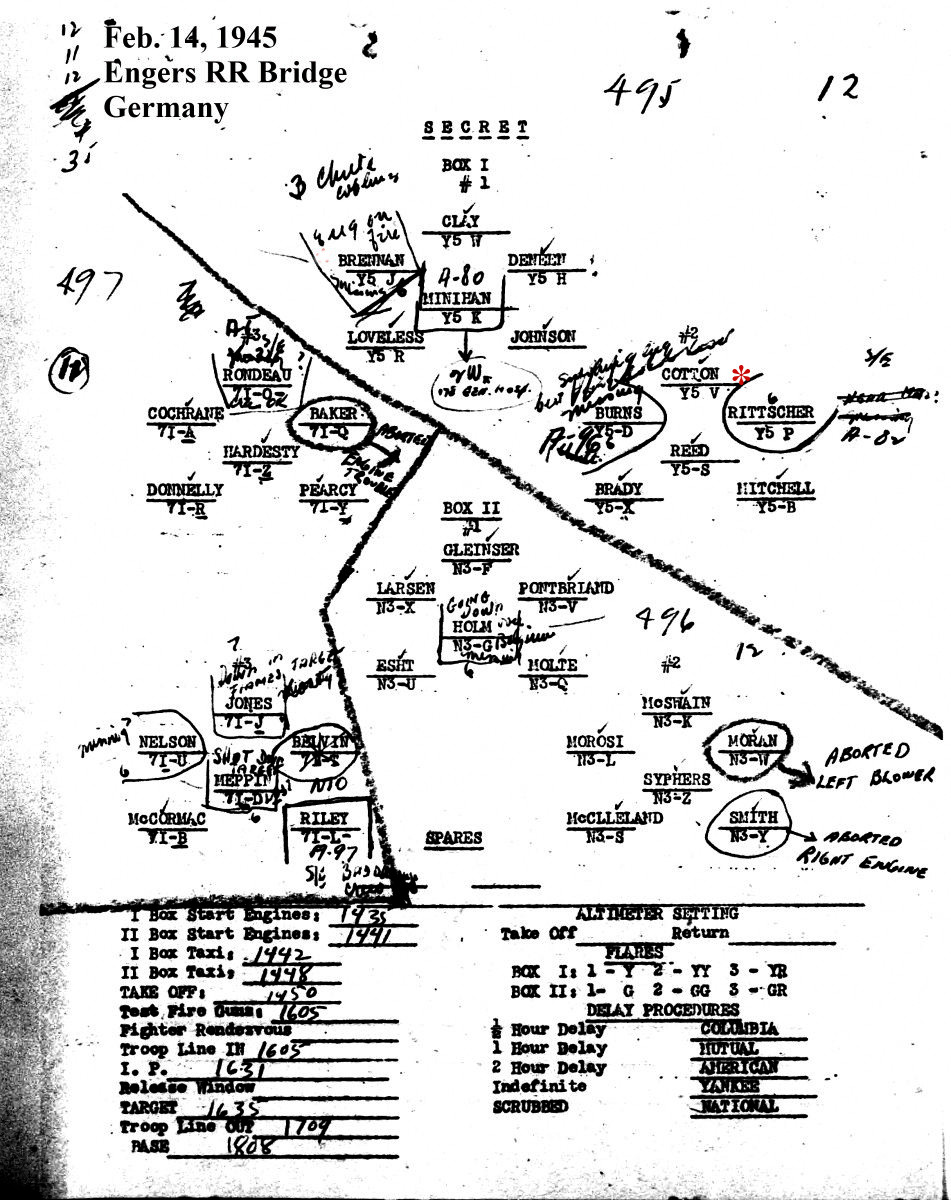
Fifty years later Leigh vividly remembers that the sky was bright blue at 10,500 feet and visibility at the I.P. was excellent, but despite the customary roar of the Marauder’s 2,000 horsepower engines, there was a strange sense of silence as he called for Cotton to roll out on course for the bomb run. The lull before the storm sure to come. And it came.
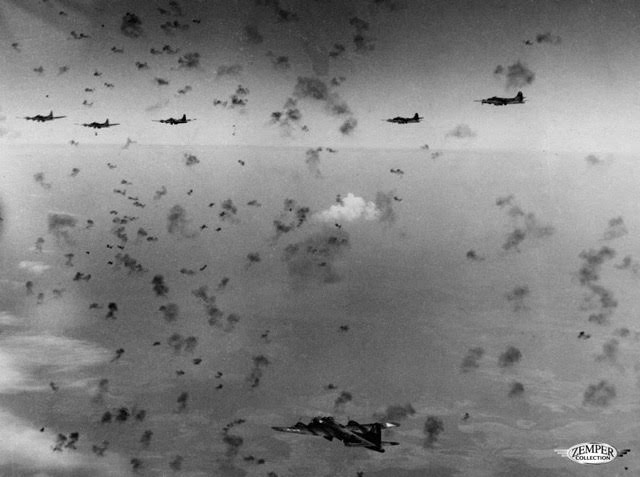
Skilled enemy antiaircraft fire was a daily fact of combat crew life, of course, but no one on this crew had experienced the intensity and unremitting barrage thrown up by the German gunners on this five minute bomb run from I.P. to target. Oily flak puffs, punctuated by bright strawberry-red flashes, melded into a nearly dark sky, and the constant g-r-r-r-u-m- p of close explosions was accompanied by a continuing hail-on-the-metal-roof sound of smaller fragments hitting the fuselage. Later, after return to base, an amazed crew counted 272 holes of varying sizes in the tough old B-26! (43-34368 Y5-V Entered combat with the 344th BG / 495th BS on 6/12/44. Flew 39 combat missions and survived the war. )
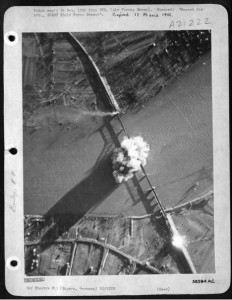
Captain Cotton’s steadiness and concentration under unrelenting fire made it possible for Bombardier Leigh to conduct an unhurried and precise sight ing operation. The target was hit dead center. Leigh remembers (to his embarrassment, today) announcing on the interphone, “Bombs away,” followed by the corny cliche, “Let’s get the hell out of here.” But never was a diving turn off a target more welcome.
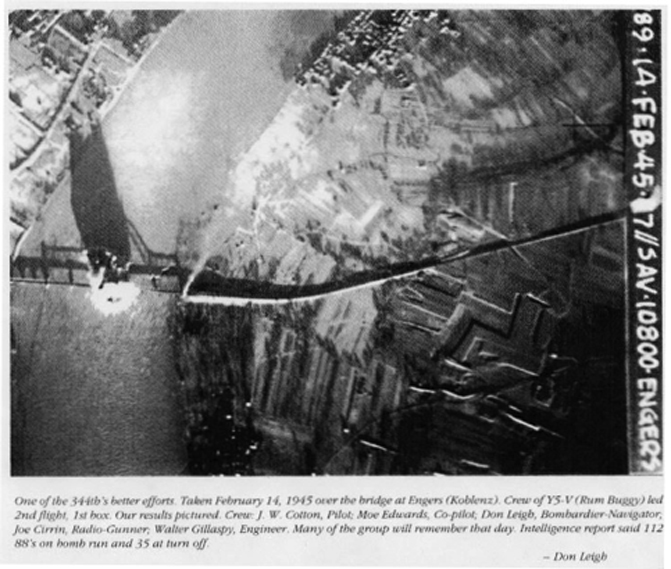
Two ships in the flight of six went down on the bomb run. The complete 344th group lost five Marauders and their crews and planes received nearly 100% battle damage. Y5-V crew members, in addition to Leigh and Cotton, who shared the memorable mission were: E.E. Edwards, Co-Pilot; W.E. Gillaspy, Engineer; J. Cirrincione, Radio; and D. Ramsey, Gunner. All of them can remember a Valentine’s Day on which they got the job done, but also the Valentine’s Day on which love was absent.
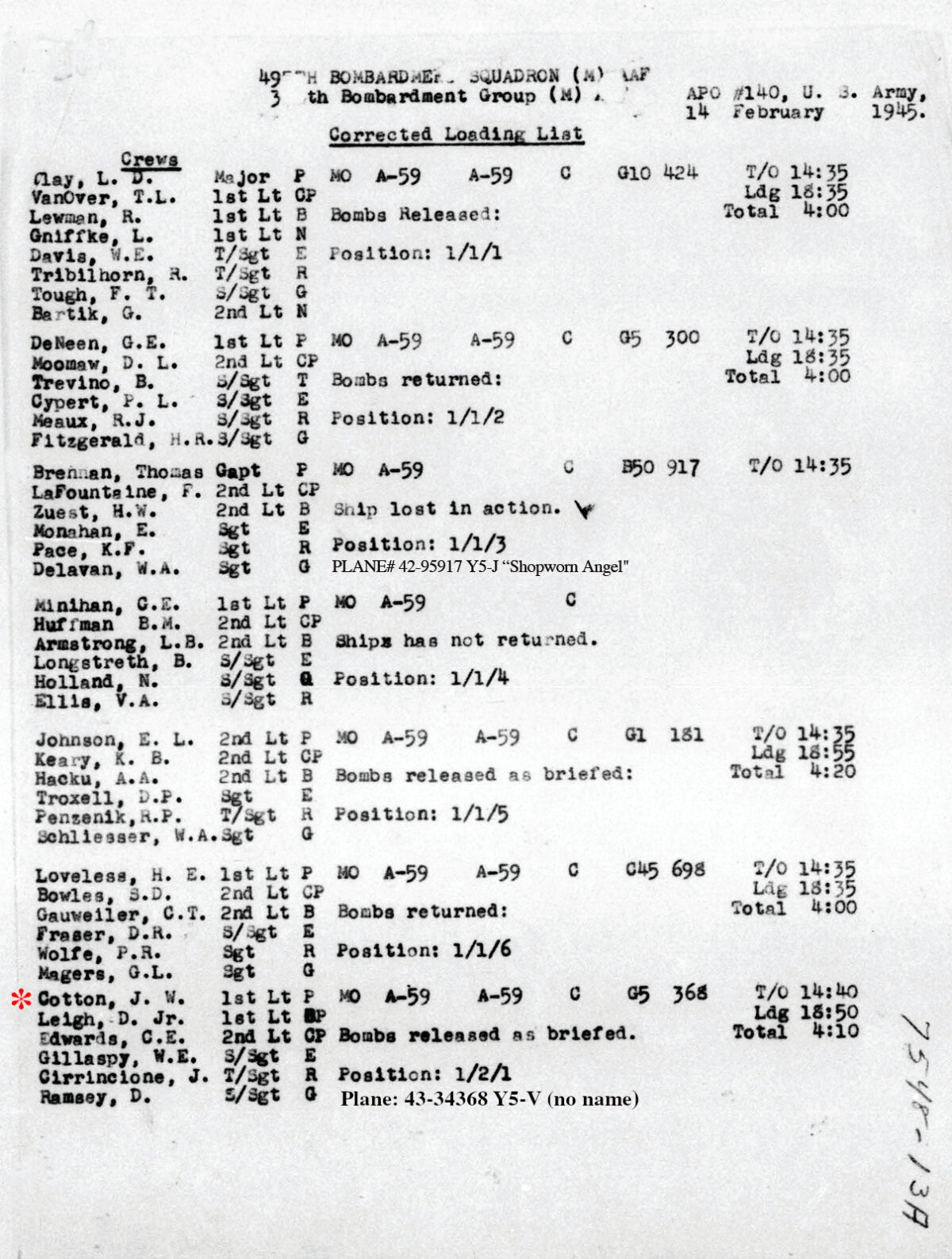
The crew consisted of; Cotton-Pilot, Leigh-Bombardier, Edwards-Co-Pilot, Gillaspy-Engineer/Gunner, Cirrincione-Radio/Gunner and Ramsey-Gunner.
The flew in 43-34368 Y5-V which had not been named. They took off at 2:40 pm and landed 6:50 pm after dropping their bombs as briefed. They were located in position 1-2-1 in the formation.
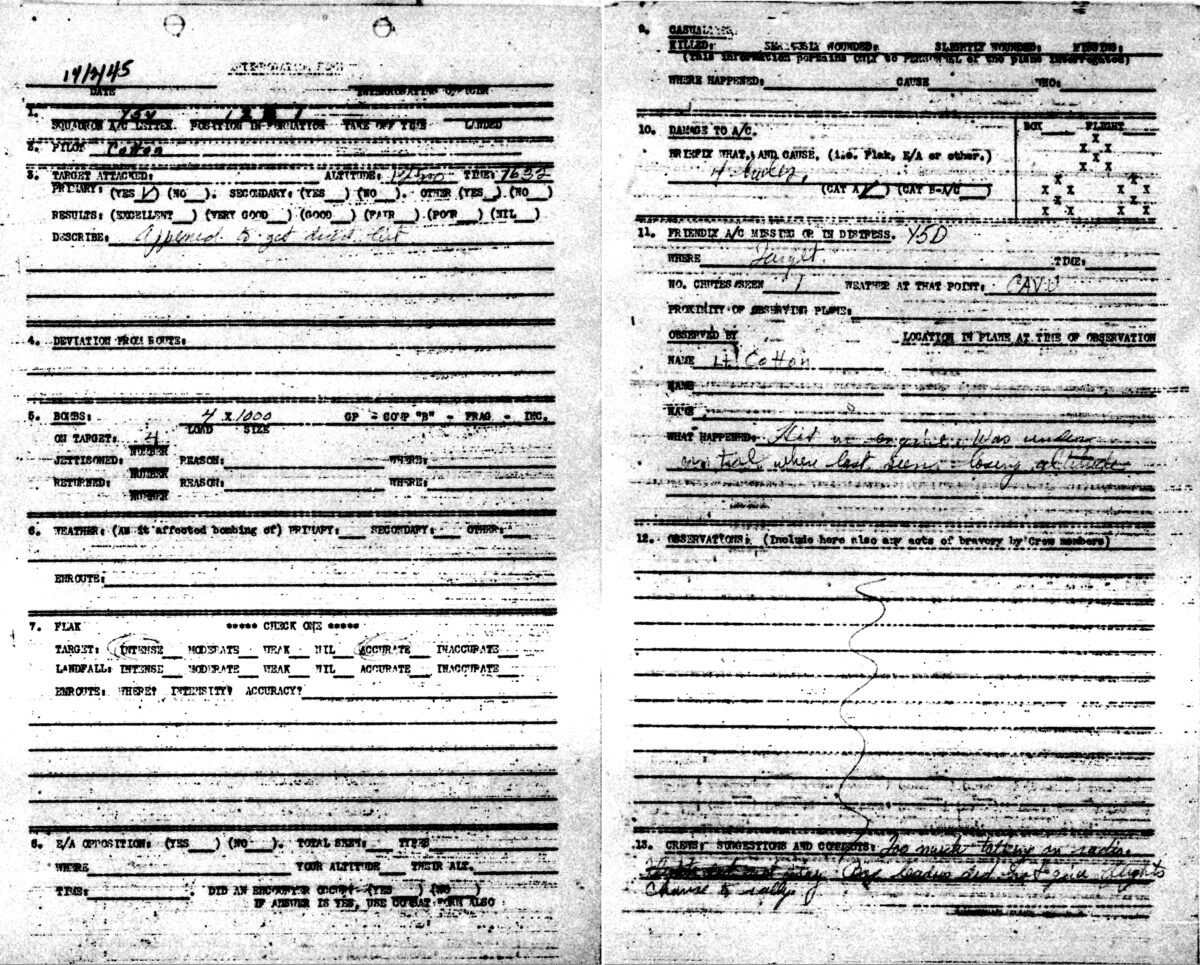
According to Cotton’s debrief of the mission of 2/14/1945, they flew in Y5-V. They attacked the target with 4- 1000 lb bombs from 12,500 ft at 4:32 pm. Cotton felt that a direct hit was achieved. He reported that intense and accurate flak was experienced. Category A damage resulted with four flak holes.
Cotton claims saw Y5-D shot down. Somehow Y5-D was not lost that day though it did not return to base. It may have made an emergency landing at Nancy – Ochey Air Base A-96. The ceiling and visibility was unlimited and he saw one parachute leaving the ship. It was “hit in engine. Was flying under control when last seen losing altitude.”
Cotton complained that there was “too much talking on the radio. The box leaders did not give flights ? to rally.”


